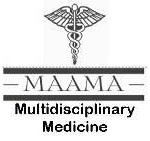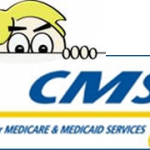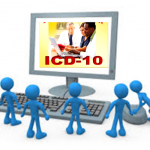 Merit-based Payment System (MIPS)
Merit-based Payment System (MIPS)
Writing for the Academy is Dr R.L. Ramsdell, PhD – Executive Director.
The Centers for Medicare & Medicaid Services (CMS) has added another 900+ page volume to our regulation reading pleasure outlining the proposed details on how physicians will be paid under Medicare in 2019. As I stated, this is a proposal open for public comments, submitted electronically or on paper, until 5 p.m. on June 27, 2016.
There are actually two programs here, the Merit-Based Incentive Payment System (MIPS) and the Alternative Payment Model (APM) incentive regulation. According to CMS, the MIPS will consolidate components of three existing programs: the Physician Quality Reporting System (PQRS), the Physician Value-based Payment Modifier (VM), and the Medicare Electronic Health Record (EHR) Incentive Program for eligible professionals (EPs). The proposed rule also would establish incentives for participation in certain alternative payment models (APMs) to help advance the Obama Administration’s 2015 goals to move 30% of traditional Medicare fee-for-service payments into alternative payment models that pay providers based on the quality rather than the quantity of care they provide by 2016 and 50% by 2018.
The current proposal is a result of the 2015 law called the Medicare Access and CHIP Reauthorization Act (MACRA), which, after decades of “temporary fixes”, finally abolished the idiotic and unsustainable -sustainable growth rate (SGR) formula for physician compensation. MACRA, as it is now known, gradually shifts reimbursement from fee-for-service to pay-for-performance or value based payment.
Under MACRA, physicians choose between two payment models with MIPS being the default model which will encompass the majority of physicians. MIPS reportedly will incorporate and align three existing Medicare incentive programs:
• meaningful use of electronic health records,
• the Physician Quality Reporting System, and
• the Value-Based Payment Modifier.
Medicare will increase or decrease a physician’s fee-for-service reimbursement in MIPS according to his or her quality of care, cost (resource use), clinical practice improvement, and meaningful use of electronic health records (advancing care information).
Our understanding in reading the proposed regulation is MIPS will be based on a “point score” system for the first year where the quality-of-care component constitutes 50% of the MIPS score; cost 10%; clinical practice improvement 15%; and advancing care information (meaningful use of electronic health records) 25%.
MIPS bonuses and penalties up to 4% each debut in 2019 and increase to
- 5% in 2020,
- 7% in 2021, and
- 9% in 2022 and beyond.
The bonuses and penalties are based on performance 2 years earlier, meaning pay hikes and pay cuts in 2019 will reflect what a clinician did in 2017.
Let’s look briefly at the “scoring” components.
• Quality (50 percent of total score in year 1): For this category, clinicians would choose to report six measures from among a range of options that accommodate differences among specialties and practices.
• Advancing Care Information (25 percent of total score in year 1): Medicare incorporated EHR and meaningful use into this new catchy term late last year) For this category, clinicians would choose to report customizable measures that reflect how they use technology in their day-to-day practice, with a particular emphasis on interoperability and information exchange. Unlike the existing reporting program, this category would not require all-or-nothing EHR measurement or redundant quality reporting.
• Clinical Practice Improvement Activities (15 percent of total score in year 1): This category would reward clinical practice improvements, such as activities focused on care coordination, beneficiary engagement, and patient safety. Clinicians may select activities that match their practices’ goals from a list of more than 90 options.
• Cost (10 percent of total score in year 1): For this category, the score would be based on Medicare claims, meaning no reporting requirements for clinicians. This category would use 40 episode-specific measures to account for differences among specialties.
Advanced Alternative Payment Models
Under provisions originally created by the Affordable Care Act, many clinicians are currently participating in alternative payment models but may not meet requirements for sufficient participation in the most advanced models under the new regulations. The proposed rule appears to be designed to provide these clinicians with financial rewards within MIPS. Further it appears that those clinicians who can participate to a sufficient extent in Advanced Alternative Payment Models – would be exempt from MIPS reporting requirements and qualify for financial bonuses under the new models.
These models include the new Comprehensive Primary Care Plus (CPC+) model, the Next Generation ACO model, and other Alternative Payment Models under which clinicians accept both risk and reward for providing coordinated, high-quality care.
Let’s look at these as they are presented by CMS in the proposal.
The Comprehensive Primary Care Plus (CPC+) model
On April 11, CMS announced its largest-ever initiative to transform how primary care is delivered and paid for in America. The initiative, called The Comprehensive Primary Care Plus (CPC+) model, is a national advanced primary care medical home model which will be implemented in up to 20 regions to accommodate up to 5,000 practices.
According to CMS, the initiative is designed to provide doctors the freedom to care for their patients the way they think will deliver the best outcomes and to be paid for achieving results and improving care.
• The CPC+ model incorporates lessons learned from the 5 year CPC initiative model tested through the Center for Medicare & Medicaid Innovation that began October 2012 and runs through December 31, 2016. Under this initiative model, CMS collaborated with 38 commercial and state health insurance plans across seven U.S. regions to support 500 primary care practices in testing aligned payment for the delivery of a single model of comprehensive primary care.
o In addition to regular fee-for-service payments, Medicare and other CPC payers provide a non-visit-based care management fee paid per member per month and an opportunity to share in savings generated in each of the CPC regions. This care management fee has provided CPC practices with the necessary financial resources to create new workflows, hire care management staff, and develop new relationships necessary to coordinate care.
• Center for Medicare and Medicaid Innovation (Innovation Center), was established by section 1115A of the Social Security Act (as added by section 3021 of the Affordable Care Act). Congress created the Innovation Center to test innovative payment and service delivery models, including primary care payment and care delivery reform, to reduce CMS program expenditures and improve quality for Medicare, Medicaid, and Children’s Health Insurance Program (CHIP) beneficiaries.
Primary care practices will participate in one of two tracks. While both tracks will be required to meet the criteria of the model, those in Track 2, will actually provide more comprehensive services for patients with complex medical and behavioral health needs.
CPC+ is reportedly designed to help practices move away from one-size-fits-all, Fee-For-Service (FFS) health care to a new system that will give doctors the freedom to deliver the care that best meets the needs of their patients.
• In Track 1, CMS will pay practices a monthly care management fee in addition to the FFS payments under the Medicare Physician Fee Schedule for activities
• In Track 2, practices will also receive a monthly care management fee and, instead of full Medicare FFS payments for Evaluation and Management services, will receive a hybrid of reduced Medicare FFS payments and up-front comprehensive primary care payments for those services
o CMS has a fact sheet on fees and payments available at: https://www.cms.gov/Newsroom/MediaReleaseDatabase/Fact-sheets/2016-Fact-sheets-items/2016-04-11.html
CMS states “to promote high-quality and high-value care, practices in both tracks will receive up-front incentive payments that they will either keep or repay based on their performance on quality and utilization metrics. Practices in both tracks also will receive data on cost and utilization.”
CPC+ will bring together CMS, commercial insurance plans, and State Medicaid agencies to provide the financial support necessary for practices to make fundamental changes in their care delivery and select regions for CPC+ where there is sufficient interest from multiple payers to support practices’ participation in the initiative. CMS will enter into a Memorandum of Understanding with selected payer partners to document a shared commitment to align on payment, data sharing, and quality metrics in CPC+. CMS will accept payer proposals to partner in CPC+ from April 15 through June 1, 2016. CMS will accept practice applications in the determined regions from July 15 through September 1, 2016.
For additional information on the “specifics” of the CPC+ program, we refer the reader to;
https://innovation.cms.gov/initiatives/Comprehensive-Primary-Care-Plus
The Next Generation ACO Model is a new CMS Innovation Center initiative that builds upon experience from the Pioneer ACO Model and the Shared Savings Program. With 21 participating ACOs, the new model offers a new opportunity in accountable care—one that enables providers and beneficiaries greater opportunities to coordinate care and aims to attain the highest quality standards of care. Unlike other models, this model includes a prospectively (rather than retrospectively) set benchmark, allows beneficiaries to choose to be aligned to the ACO, and tests beneficiary incentives for seeking care at Next Generation providers, including increased availability of telehealth and care coordination services.
The Next Generation Model participants will have the opportunity to take on higher levels of financial risk – up to 100 percent risk – than ACOs in current initiatives. While they are at greater financial risk they also have a greater opportunity to share in more of the Model’s savings through better care coordination and care management. In addition, the ACOs will receive their budgets prospectively, in advance of the performance year, to plan and manage care around these financial targets from the outset. The ACOs will also be able to select from flexible payment options, such as infrastructure payments that support ACO investments in care.
There are 18 ACOs currently participating in the Next Generation ACO Model in 14 States.
For more information on the Next Generation ACO Model, including the list of provider participants, and how to apply for 2017, we refer the reader to:
https://innovation.cms.gov/initiatives/Next-Generation-ACO-Model/
Deadline for submission of your letter of intent (LOI) has been extended to May 20, 2016. The actual application must be received by May 25th.
The Next Generation ACO Model is an initiative designed for ACOs that are very experienced in coordinating care for large populations of patients.
The Academy does NOT recommend this for our member practices.
Under the current proposal, as we understand it, we would suggest our members choose the MIPS program and strive to fully participate in that to receive their financial incentive bonuses.
 CMS is now reviewing claims and will be notifying practices which clinicians will need to take part in the Merit-based Incentive Payment System (MIPS), under the new Quality Payment Program (QPP).
CMS is now reviewing claims and will be notifying practices which clinicians will need to take part in the Merit-based Incentive Payment System (MIPS), under the new Quality Payment Program (QPP). References: CR10001 – Medicare Claims Processing Manual – Pub 100-04 Chapter 12, Sections 50 and 140.
References: CR10001 – Medicare Claims Processing Manual – Pub 100-04 Chapter 12, Sections 50 and 140.  For CY 2017, the CPT Editorial Panel will deleted four CPT codes (97001, 97002, 97003, and 97004) and create eight new CPT codes (97X61-97X68) to describe the evaluation procedures furnished by physical therapists and occupational therapists. There are three new codes, stratified by complexity, to replace a single code, 97001, for physical therapy (PT) evaluation, three new codes, also stratified by complexity, to replace a single code, 97003, for occupational therapy (OT) evaluation, and one new code each to replace the reevaluation codes for physical and occupational therapy – 97002 and 97004.
For CY 2017, the CPT Editorial Panel will deleted four CPT codes (97001, 97002, 97003, and 97004) and create eight new CPT codes (97X61-97X68) to describe the evaluation procedures furnished by physical therapists and occupational therapists. There are three new codes, stratified by complexity, to replace a single code, 97001, for physical therapy (PT) evaluation, three new codes, also stratified by complexity, to replace a single code, 97003, for occupational therapy (OT) evaluation, and one new code each to replace the reevaluation codes for physical and occupational therapy – 97002 and 97004.


 Typically their first concern arises when they receive a letter from an investigations unit requesting several patient files for specific dates of service that the carrier bases on their provider participation agreement authorizing the plan(s) to perform reviews, audits and statistically valid sampling techniques for peer review program activities, medical necessity reviews, data validation reviews, billing and claims payment audits, coding or quality review audits; all of which routinely hold all physicians in the practice jointly and severally liable for misreporting by any and all providers in the practice.
Typically their first concern arises when they receive a letter from an investigations unit requesting several patient files for specific dates of service that the carrier bases on their provider participation agreement authorizing the plan(s) to perform reviews, audits and statistically valid sampling techniques for peer review program activities, medical necessity reviews, data validation reviews, billing and claims payment audits, coding or quality review audits; all of which routinely hold all physicians in the practice jointly and severally liable for misreporting by any and all providers in the practice. President Obama has been crowned the greatest gun salesman in America. People are flocking to the gun ranges to shoot their newest protection piece and concealed weapons permits are up significantly.
President Obama has been crowned the greatest gun salesman in America. People are flocking to the gun ranges to shoot their newest protection piece and concealed weapons permits are up significantly.